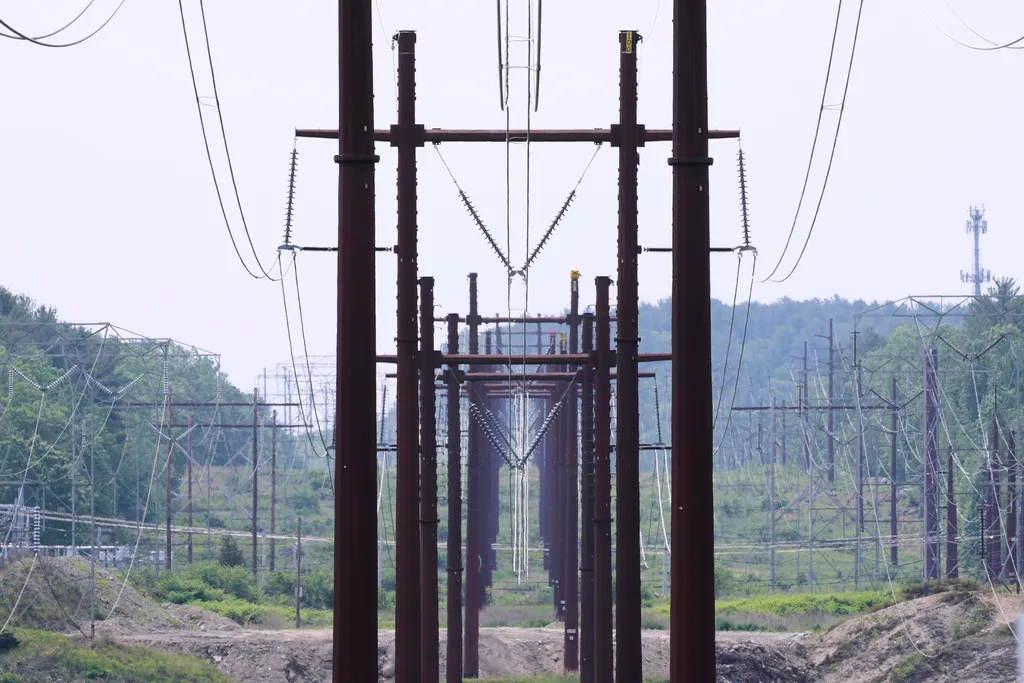


A string of headlines last month noted the inflation in the United States and pointed toward the higher costs the public is paying on everything from electricity to beef. President Donald Trump’s tariffs are getting their fair share of the blame, but what no one seems to be pointing to is the growing energy crisis causing prices to spike across the board.
While inflation has moderated in many areas of the economy, energy remains one of the most volatile categories. According to recent data, average U.S. electricity prices have jumped significantly in the past few years, and there are several interlocking reasons that explain why the trend is unlikely to reverse anytime soon.
Recommended Stories
- The golden rule of democracy: No murder
- Fixing Social Security: From Fairness Act to faster benefits
- Where have the Big Beautiful Bill’s discretionary savings gone?
THE DEMOCRATS’ RIDICULOUS SHUTDOWN RANSOM
One of the biggest drivers is infrastructure strain. Much of the U.S. grid was built decades ago and is in desperate need of modernization. Utilities are facing mounting costs to replace aging transmission lines, upgrade substations, and harden the system against extreme weather events. Those costs don’t come out of nowhere. They’re passed directly to consumers through higher rates.
On top of that, the United States is in the middle of an energy transition. Policymakers have been pushing utilities to move away from coal and, increasingly, natural gas, toward renewables such as solar and wind. Renewables, quite frankly, cannot deliver the amount of energy we needed even a decade ago. The thought that they could ever replace the old system, much less keep up with the demand that’s coming, is laughable. But we’ve spent decades and billions chasing that agenda, while nuclear power, the only real energy source capable of delivering both environmental gains and abundant power, has been left out in the cold by the regulatory state.
In many regions, ratepayers are effectively footing the bill for both the old system and the new one at the same time. Meanwhile, demand isn’t just growing. It’s imploding — especially as data centers, AI computing, and the push to electrify vehicles pile more stress onto an already overburdened grid. Creating energy sources that can meet that demand is quickly becoming an existential problem. “Will Americans be able to pay their electricity bills?” worries the average citizen, but whether the U.S. can compete with rivals such as China if we fail to meet demand is what keeps our industrial titans up at night.
These upward pressures are likely to accelerate. Utilities are forecasting steady rate hikes for the next decade, citing everything from federal climate mandates to rising interest rates that make financing new infrastructure more expensive. Unlike gasoline prices, which fluctuate daily and can drop quickly, electricity rates tend to move in one direction: up. Once they’re locked in through rate cases and regulatory approval, consumers rarely see meaningful relief.
The severity of this problem is one that’s seemingly bringing Republicans and Democrats together in Washington, D.C., as an effort to pass permitting reform this fall takes shape. Currently, America’s biggest barrier to cheaper, more reliable energy isn’t technology. It’s red tape. Building new power plants, transmission lines, or even clean energy projects takes years, sometimes over a decade, because federal, state, and local permitting processes are so slow and tangled. Until those rules are streamlined, the supply of electricity can’t keep up with demand, which means higher prices for everyone.
BURGUM HAILS PENNSYLVANIA AS ENERGY POWERHOUSE AT SHALE INSIGHT CONFERENCE
While there is bipartisan support for permitting reform, a welcome piece of news if I ever heard one, that shouldn’t lead people to believe getting it done will be an easy fight. There’s no shortage of the climate nazis, NIMBYs, and economic illiterates who fought for the system as it currently exists in the first place. The success of permitting reform is ultimately going to rest with the normies rallying to fight for their own self-interest and demanding relief. Average Americans are obviously desperate for a break when it comes to the economy — it’s what led most of them to vote for Trump this go-around. That’s the relief his administration has withheld so far, but if he puts his weight behind this push, it could redeem him in many ways.
The energy transition is hitting consumers before the benefits are anywhere in sight. The question everyone should be asking is, “Will Americans be able to keep the lights on?”
Hannah Cox (@HannahDCox) is the president and co-founder of BASEDPolitics and a fellow for the White Coat Waste Project.
